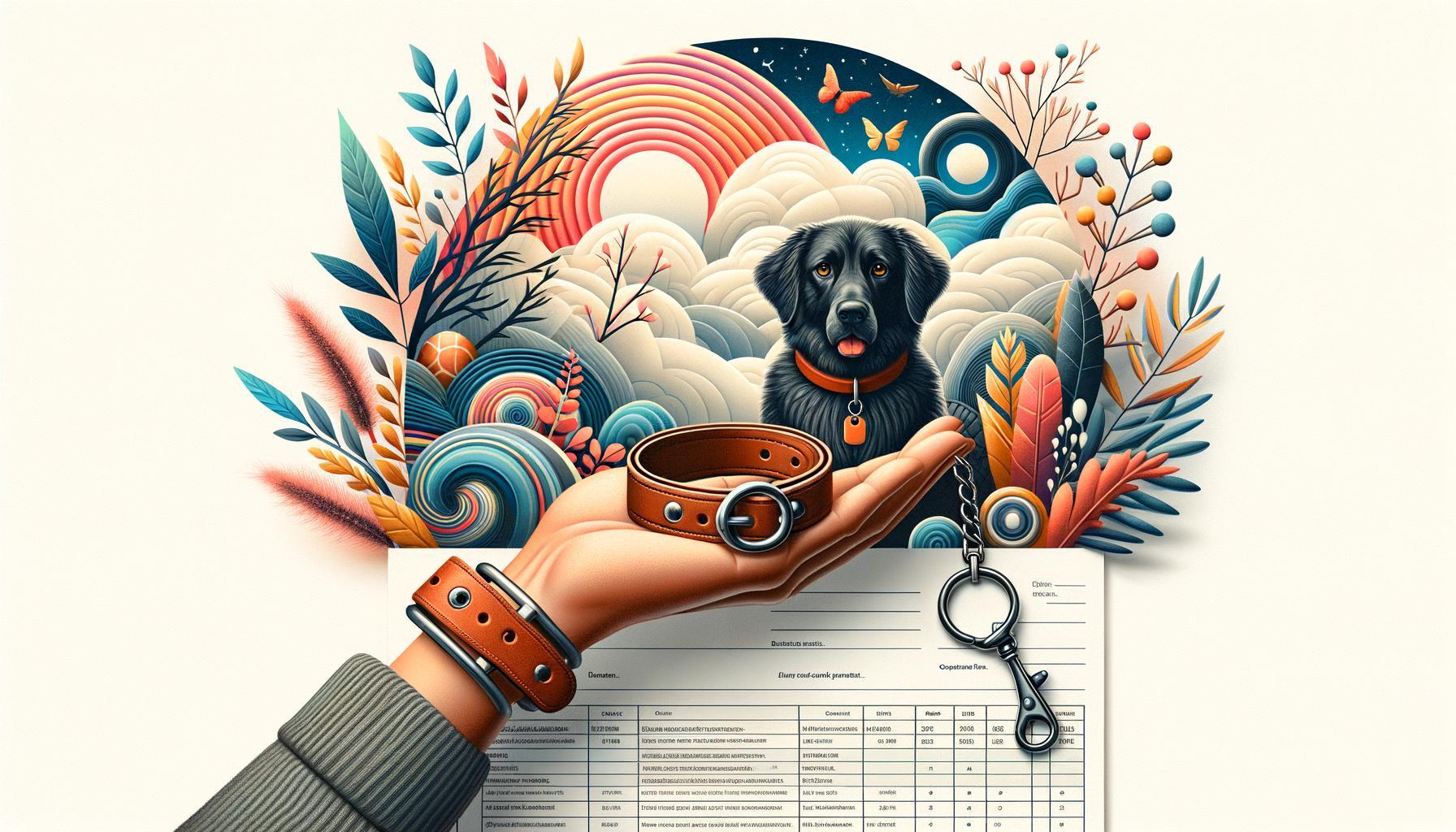In the labyrinth of modern life, comfort can seem like a priceless commodity, especially when offered by furry, feathered, or even scaled companions. Enter the world of Emotional Support Animals (ESAs), whose loyal presence provides a balm to the psyche like no other. From dogs and cats to rabbits and parrots, these animals offer more than just company; they provide essential emotional respite. But behind the heartwarming scenes of pets snuggled on laps or perched on shoulders, lies a less-discussed aspect of ESA ownership—the financial commitments. Welcome to “The Pricetag of Comfort,” where we unravel the often overlooked, yet significant costs associated with having an emotional support animal. Here, we will navigate through the expenses of care, training, certification, and everyday maintenance, shedding light on the true investment behind these loyal guardians of our mental well-being.
Table of Contents
- Essential Expenses: Vet Visits and Health Care
- Home Preparations: Environmental Adaption Costs
- Travel and Accommodation: Navigating Logistics and Fees
- Legalities and Paperwork: Navigating Certification Processes
- Training and Behavior: Investing in Proper Education
- Budgeting Wisely: Financial Tips and Long-term Planning
- Closing Remarks
Essential Expenses: Vet Visits and Health Care
One of the fundamental aspects of owning an emotional support animal (ESA) is ensuring they receive regular veterinary care and health check-ups. Just like any other companion, ESAs require routine visits to the vet to confirm they are in good health. These appointments can include standard vaccinations, annual check-ups, and other potential treatments. Without question, this regular maintenance of your pet’s health can add up over time, but it’s crucial for their well-being and for the comfort they provide you. Think of it as an investment in your peace of mind as much as in their vitality.
Here’s a quick breakdown of common vet expenses for ESAs:
- Annual Check-ups: $50 – $100
- Vaccinations: $20 - $40 per shot
- Flea and Tick Prevention: $50 – $200 annually
- Spaying/Neutering: $200 – $500
Furthermore, we can’t forget about unexpected health issues that may arise. Injuries and illnesses don’t stick to a schedule and can bring with them costs that are difficult to estimate in advance. Here’s a rough idea of what these might look like:
| Health Issue | Approx. Cost |
|---|---|
| Emergency Vet Visit | $500 – $1000+ |
| Pet Medications | $10 – $100 |
| Surgery | $1000 - $3000+ |
In addition to these direct costs, consider investing in pet insurance, which can help alleviate the financial burden of unforeseen medical expenses. While it may represent an extra monthly expense, the peace of mind it offers is truly priceless.
Home Preparations: Environmental Adaption Costs
To ensure your home is a safe and welcoming environment for your emotional support animal, several **environmental adaptaions** may be necessary. These modifications can vary greatly depending on the type and needs of your ESA. Some common adjustments might include:
- **Pet-friendly furniture:** Investing in durable, scratch-resistant pieces.
- **Safety gates:** Installing barriers in strategic areas to limit access.
- **Pet-proof flooring:** Implementing easy-to-clean tiles or mess-resistant rugs.
- **Cozy bedding:** Providing thermal blankets or waterproof cushions.
For a precise estimate, considering both the initial setup and ongoing maintenance costs is essential. Below is a simple estimation table of potential expenses for common home adaptations:
| Adaptation | Initial Cost | Maintenance Cost (per year) |
|---|---|---|
| Pet-friendly furniture | $500 – $1500 | $50 – $200 |
| Safety gates | $40 – $150 | $10 - $50 |
| Pet-proof flooring | $300 – $1000 | $20 – $100 |
| Cozy bedding | $20 – $100 | $10 – $50 |
Travel and Accommodation: Navigating Logistics and Fees
Traveling with an Emotional Support Animal (ESA) introduces a unique set of challenges, particularly when it comes to the logistics and fees involved. Many airlines now welcome ESAs, but they often come with specific guidelines and associated expenses. **Pet fees** may vary by airline, ranging from $75 to $200 per flight. Additionally, some accommodation providers, such as hotels or Airbnb hosts, may require an extra **cleaning fee** or an additional **nightly charge** to cover the presence of your ESA. While these costs can add up, they ensure that comfort and considerations are extended to your beloved companion while also maintaining cleanliness and orderliness for all guests.
Comparison shopping becomes a necessary part of planning your trip. Different carriers and lodgings have varying policies and fees, therefore, being well-informed is crucial. Here’s a brief look at the potential costs you might encounter:
| Service | Low Range | High Range |
|---|---|---|
| Airline Pet Fee | $75 | $200 |
| Hotel Pet Fee | $20/night | $100/night |
| Airbnb Cleaning Fee | $50 | $150 |
- Airline Policies: Verify ESA documentation requirements ahead of time.
- Accommodation Options: Ask about pet-friendly rooms and any additional fees before booking.
- Budget Planning: Factor these additional costs into your travel budget to avoid surprises.
Legalities and Paperwork: Navigating Certification Processes
When planning to add an emotional support animal (ESA) to your life, understanding the certification process is crucial. Notably, your first step should be obtaining a legitimate letter from a licensed mental health professional. This letter must detail your need for an ESA in managing mental health conditions such as anxiety, depression, or PTSD. Documentation is more than just form-filling; it’s about ensuring your rights are respected in housing and travel. Moreover, be aware that only specific professionals can issue these letters:
- Psychologists
- Psychiatrists
- Licensed Therapists or Counselors
The red tape doesn’t stop there. Each airline and landlord may require additional forms or documentation. It’s important to familiarize yourself with the Fair Housing Act (FHA) and the Air Carrier Access Act (ACAA) which protect your rights. Critical documents to have on hand include:
| Document | Purpose |
|---|---|
| ESA Letter | Primary document for housing and travel accommodations |
| Veterinarian Letters | Verifies animal’s health and vaccination status |
| Airline Forms | Specific forms required by airlines for ESA travel |
Training and Behavior: Investing in Proper Education
Proper training and behavior management are crucial investments when it comes to emotional support animals (ESAs). Not only can these practices enhance the animal’s capacity to provide comfort, but they also ensure a balanced coexistence in varied environments. **Training programs** can range from basic obedience classes to specialized behavioral courses tailored to meet specific needs. Moreover, consistent reinforcement of positive behaviors through **rewards** and **social interactions** will help in nurturing a well-adjusted and emotionally-responsive companion. Taking time to educate both the animals and their owners builds a foundation of mutual understanding, which is invaluable in moments of emotional distress.
Additionally, **behavioral assessments** are often required to certify an animal as fit for this role, especially when traveling or moving into new accommodations. These evaluations consider how the animal responds to stress, interacts with strangers, and adapts to different settings. For a clearer picture, here’s a table showcasing typical training-related expenses for ESAs:
| Expense | Cost Range |
|---|---|
| Basic Obedience Classes | $50 – $200 |
| Specialized Behavioral Courses | $200 - $500 |
| Behavioral Assessments | $100 – $300 |
| Reinforcement Treats and Tools | $20 - $100 |
Investing in these educational avenues not only underscores the importance of the animal’s role but also solidifies the trust and dependability that is integral to the ESA’s purpose. Through structured learning and persistent reinforcement, the ESA can meet and exceed the emotional needs they are intended to support.
Budgeting Wisely: Financial Tips and Long-term Planning
When you decide to bring an emotional support animal (ESA) into your life, understanding the financial implications is crucial. **Initial costs** for adopting or purchasing an ESA can vary widely depending on the type of pet, breed, and where you obtain it. For example, adopting from a shelter might set you back anywhere from $50 to $300, while purchasing a breed-specific animal could cost upwards of a thousand dollars. Beyond the acquisition, there are initial expenses for pet supplies, which can include:
- **Food and water bowls**
- **Beds and crates**
- **Leashes, collars, and harnesses**
- **Toys and enrichment activities**
**Long-term expenses** will continue to accumulate as you care for your ESA. Routine vet visits, grooming, and high-quality food are essential to your pet’s well-being. Unexpected medical expenses can also arise, so it’s wise to budget for pet insurance or an emergency fund dedicated to your pet. Here’s a small table for some average annual costs:
| Expense Type | Average Cost |
|---|---|
| Routine Vet Visits | $200 – $400 |
| Food | $300 - $600 |
| Grooming | $30 – $500 |
| Pet Insurance | $300 – $600 |
| Miscellaneous Supplies | $100 – $150 |
Closing Remarks
As we close the chapter on the financial facets of emotional support animals, it’s clear that the comforts they provide come with a variety of costs. From initial investments to ongoing care, each expense piece forms part of a broader puzzle, a mosaic that underscores the invaluable bond between human and animal. But remember, within those numbers lie stories of companionship, healing, and joy—things that often transcend price tags. Navigating these waters may require careful planning and foresight, but for many, the emotional dividends are worth every penny. As you consider the journey of inviting an emotional support animal into your life, balance your budget with your heart, and let the promise of comfort guide you forward.







Leave a Reply